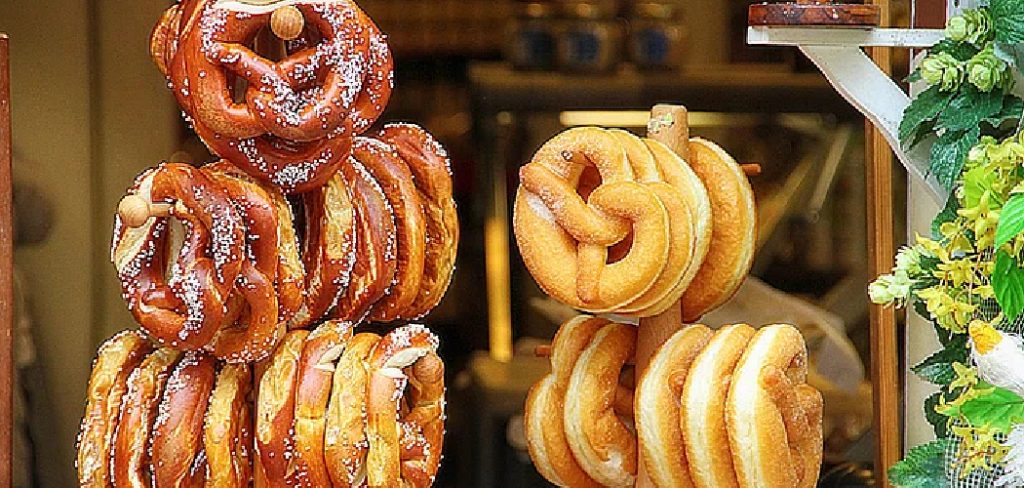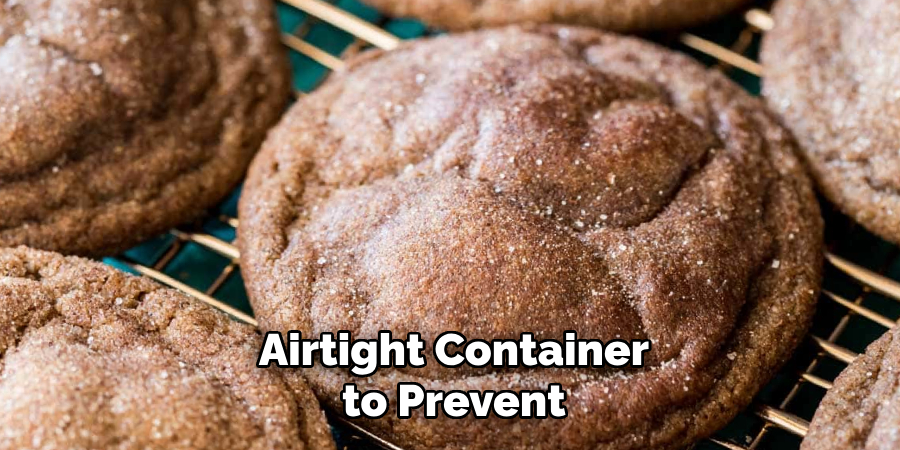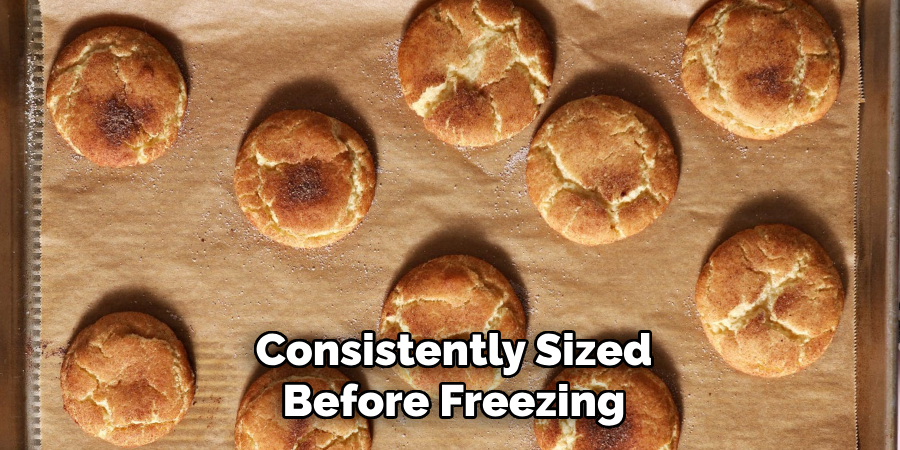Snickerdoodles are a classic cookie enjoyed for their soft, chewy texture and cinnamon-sugar coating. Properly storing these delicious treats is essential to maintain their freshness and flavor for as long as possible. This guide explores the key aspects of how to store snickerdoodles. Whether you’ve baked a fresh batch at home or received them as a gift, knowing the best storage techniques will ensure your snickerdoodles stay irresistible for days.

Importance of Proper Storage
Proper storage is crucial to preserve the texture, flavor, and overall quality of snickerdoodles. Without the right storage methods, these cookies can quickly become stale, hard, or lose their signature chewiness. Additionally, improper storage may expose the cookies to moisture, resulting in an undesirable texture, or odors from other foods, which can alter their delicious cinnamon-sugar taste. By taking the time to store snickerdoodles correctly, you can extend their shelf life and ensure they remain as delightful as when they were freshly baked.
Understanding Snickerdoodle Shelf Life
The shelf life of snickerdoodles depends on how they are stored and the conditions they are kept in. When stored in an airtight container at room temperature, snickerdoodles typically remain fresh for up to a week. However, they will begin to lose their softness after the first few days. For longer storage, you can freeze snickerdoodles to maintain their quality for up to three months. It’s crucial to ensure the cookies are completely cooled before storing to prevent moisture buildup, which could compromise their texture. Understanding these timeframes helps in planning when and how to best enjoy your snickerdoodles at their freshest.
10 Methods How to Store Snickerdoodles
1. Storing at Room Temperature in an Airtight Container
The simplest and most effective method to keep snickerdoodles fresh is by storing them in an airtight container at room temperature. After baking and cooling them completely, place the cookies in a container with a secure lid to prevent air exposure, which can cause them to become stale. If stacking the cookies, separate layers with parchment paper to avoid sticking. Stored this way, snickerdoodles will remain soft and fresh for up to a week.

2. Using a Bread Slice to Retain Moisture
A classic trick to maintain the softness of snickerdoodles is to store them with a slice of bread. Place a piece of fresh bread inside the airtight container with the cookies. The bread helps retain moisture by slowly releasing humidity, preventing the cookies from drying out. Be sure to replace the bread slice every couple of days to keep the storage environment fresh.
3. Freezing for Long-Term Preservation
If you want to enjoy snickerdoodles beyond a week, freezing is an excellent option. Arrange the cookies in a single layer on a baking sheet and freeze them for an hour to prevent sticking. Then, transfer them to a freezer-safe bag or airtight container, removing as much air as possible before sealing. Label with the date and store for up to three months. To enjoy, simply let them thaw at room temperature or warm them slightly in the microwave.
4. Wrapping Individually for Grab-and-Go Convenience
For those who like to snack on snickerdoodles throughout the week, wrapping them individually in plastic wrap or parchment paper is a great way to keep them fresh. This method not only retains moisture but also makes it easy to grab a single cookie without exposing the rest to air. Place the individually wrapped cookies in an airtight container for best results.
5. Refrigerating for a Slightly Longer Shelf Life
While snickerdoodles don’t require refrigeration, storing them in the fridge can extend their freshness for an additional few days. Use an airtight container to prevent them from absorbing other odors in the fridge. Before eating, allow the cookies to come to room temperature or warm them up slightly to bring back their soft texture.

6. Storing in a Cookie Tin for a Classic Approach
For a nostalgic and effective storage method, use a cookie tin to store your snickerdoodles. Cookie tins help maintain freshness while allowing a bit of airflow, preventing excessive moisture buildup that could make the cookies soggy. Line the tin with parchment paper and separate layers with additional paper to keep the cookies from sticking.
7. Keeping Unbaked Dough in the Freezer for Fresh-Baked Cookies
If you love freshly baked snickerdoodles, consider storing unbaked dough instead of baked cookies. Roll the dough into balls, coat them in cinnamon sugar, and freeze them on a baking sheet until solid. Once frozen, transfer them to a freezer-safe bag and store for up to three months. When ready to bake, place frozen dough balls directly on a baking sheet and extend the baking time by a few minutes.
8. Vacuum Sealing for Ultimate Freshness
For those who want to keep their snickerdoodles as fresh as possible for an extended time, vacuum sealing is a top-tier storage method. Using a vacuum sealer removes excess air, reducing the risk of staleness. This method is especially effective when combined with freezing, allowing cookies to retain their original texture and flavor for months.
9. Separating Different Cookie Types to Avoid Flavor Mixing
If storing snickerdoodles with other types of cookies, keep in mind that strong flavors, such as peppermint or chocolate, can transfer. To prevent flavor mixing, store snickerdoodles in a separate container or use individual bags for different cookie varieties. This ensures that the classic cinnamon-sugar flavor remains intact.
10. Refreshing Stale Snickerdoodles with Gentle Reheating
If your snickerdoodles become slightly stale, a quick refresh can bring them back to life. Place the cookies on a baking sheet and warm them in a preheated oven at 300°F (150°C) for 3–5 minutes. This method helps restore softness and enhances the flavor. Alternatively, microwaving a cookie for 10–15 seconds can also revive its chewy texture.

Troubleshooting Common Issues
Even with the best storage methods, sometimes problems may arise when trying to keep snickerdoodles fresh and enjoyable. Here are some common issues and how to troubleshoot them effectively:
1. Cookies Becoming Too Hard
If your snickerdoodles have turned hard, it’s likely due to air exposure or insufficient moisture during storage. To revive them, try adding a slice of bread to the storage container. The bread will release moisture, softening the cookies over time. Additionally, gently reheating the cookies in the oven for a few minutes can help restore their softness.
2. Soggy or Moist Cookies
Soggy snickerdoodles often result from excess humidity or moisture buildup in the storage container. To prevent this, always ensure the cookies are fully cooled before storing them. If the cookies have already become soggy, try placing them in a single layer on a baking sheet and warming them in the oven at 300°F (150°C) for a few minutes to remove excess moisture.
3. Loss of Cinnamon Flavor
Over time, the cinnamon-sugar coating on snickerdoodles can lose its vibrant flavor. To rejuvenate the flavor, lightly sprinkle the cookies with a fresh layer of cinnamon-sugar mix just before serving. Alternatively, you can dip the cookies slightly in the cinnamon-sugar before gently reheating them.
4. Sticking Together in Storage
Cookies sticking together is a common issue, especially if they’ve been stacked without separation. To avoid this, always use parchment paper to separate layers in the container. If they’re already stuck, gently separate them using a flat-edge utensil, such as a butter knife, to avoid breaking them.
5. Freezer Burn on Frozen Cookies
If frozen snickerdoodles develop freezer burn, it’s likely because they weren’t stored in an airtight, freezer-safe container or bag. Unfortunately, freezer burn can cause a dry texture and off-flavors that are difficult to fully reverse. To avoid this in the future, ensure as much air is removed from the storage container as possible, either by tightly sealing or using vacuum-sealed packaging.
6. Uneven Baking of Do-Ahead Dough
If you notice that pre-frozen cookie dough results in unevenly baked cookies, this may be due to varying sizes or improper thawing. Ensure that the dough balls are consistently sized before freezing. When baking directly from frozen, arrange them evenly spaced on the baking sheet and give them a few extra minutes to bake through.

7. Absorbing Unwanted Odors in Storage
Snickerdoodles can sometimes absorb strong smells from their environment, especially in the refrigerator or freezer. To prevent this, always store cookies in an airtight container. Placing a small piece of baking soda or a refrigerator deodorizer near the storage area can also help neutralize odors. If the cookies do pick up an unwanted odor, try refreshing them with gentle reheating or placing a slice of fresh bread in the container for a few hours.
Conclusion
By following these storage and troubleshooting tips, you can ensure your snickerdoodles remain fresh, flavorful, and enjoyable for as long as possible. Whether you’re preparing them in advance, storing them for later, or dealing with minor issues, these strategies will help maintain their soft texture and iconic cinnamon-sugar sweetness. Thanks for reading, and we hope this has given you some inspiration on how to store snickerdoodles!
Professional Focus
Angela Ervin, a former interior designer turned blogger, specializes in kitchen design and renovations. Through her website, she blends her passion for cooking with design expertise, sharing practical and creative ideas. Known for balancing functionality and beauty, Angela’s insightful content has made her a trusted voice in home design and lifestyle.
About the Author
Angela Ervin, an experienced interior designer and blogger, combines her passion for kitchen renovations with storytelling. Living in Petersburg with her family, she enjoys cooking and testing her projects firsthand. Known for her humor and relatable style, Angela shares creative, functional design insights through her content, making her a trusted voice in home design.
Education History
University: Virginia Commonwealth University
Degree: Bachelor of Fine Arts (BFA) in Interior Design
- Angela’s education at VCU focused on mastering core interior design principles, including spatial planning, color theory, materials selection, and sustainable design practices.
- She gained hands-on experience through studio projects and collaborative design exercises, which honed her ability to create functional and aesthetically pleasing environments.
- Her coursework also emphasized problem-solving and practical applications of design, preparing her for real-world projects like her self-directed kitchen renovations.
- The program’s strong foundation in both technical skills and creative expression shaped Angela’s ability to seamlessly integrate form and function in her work.


